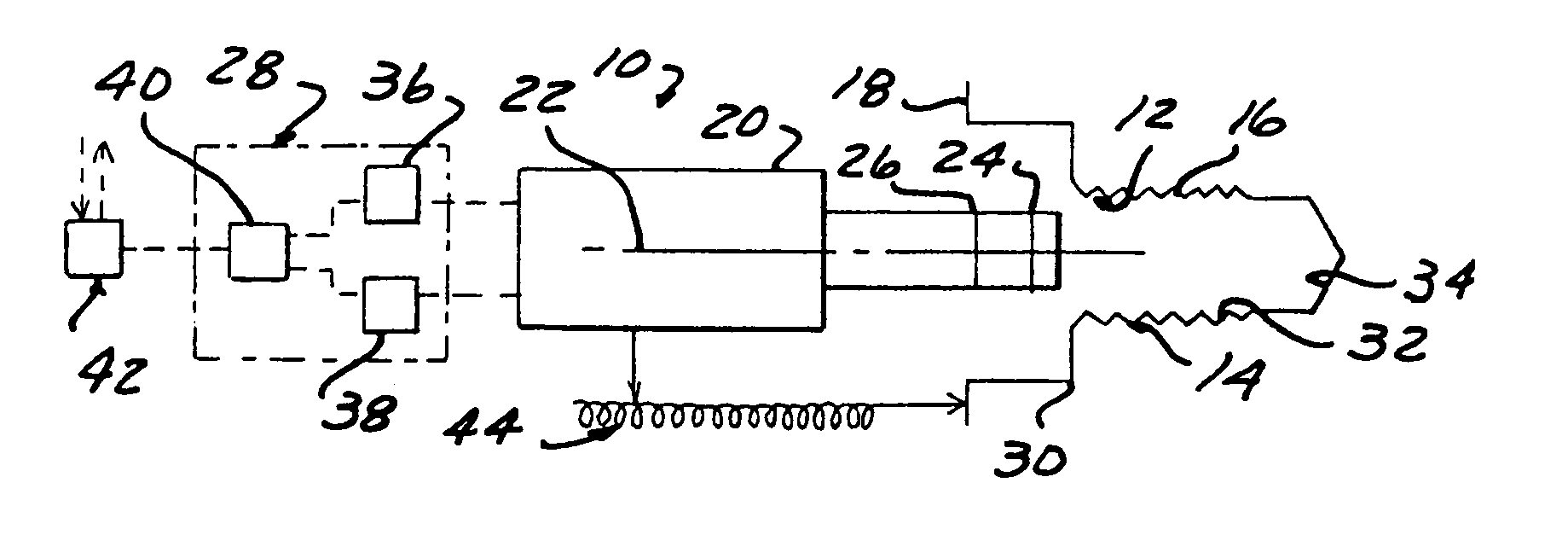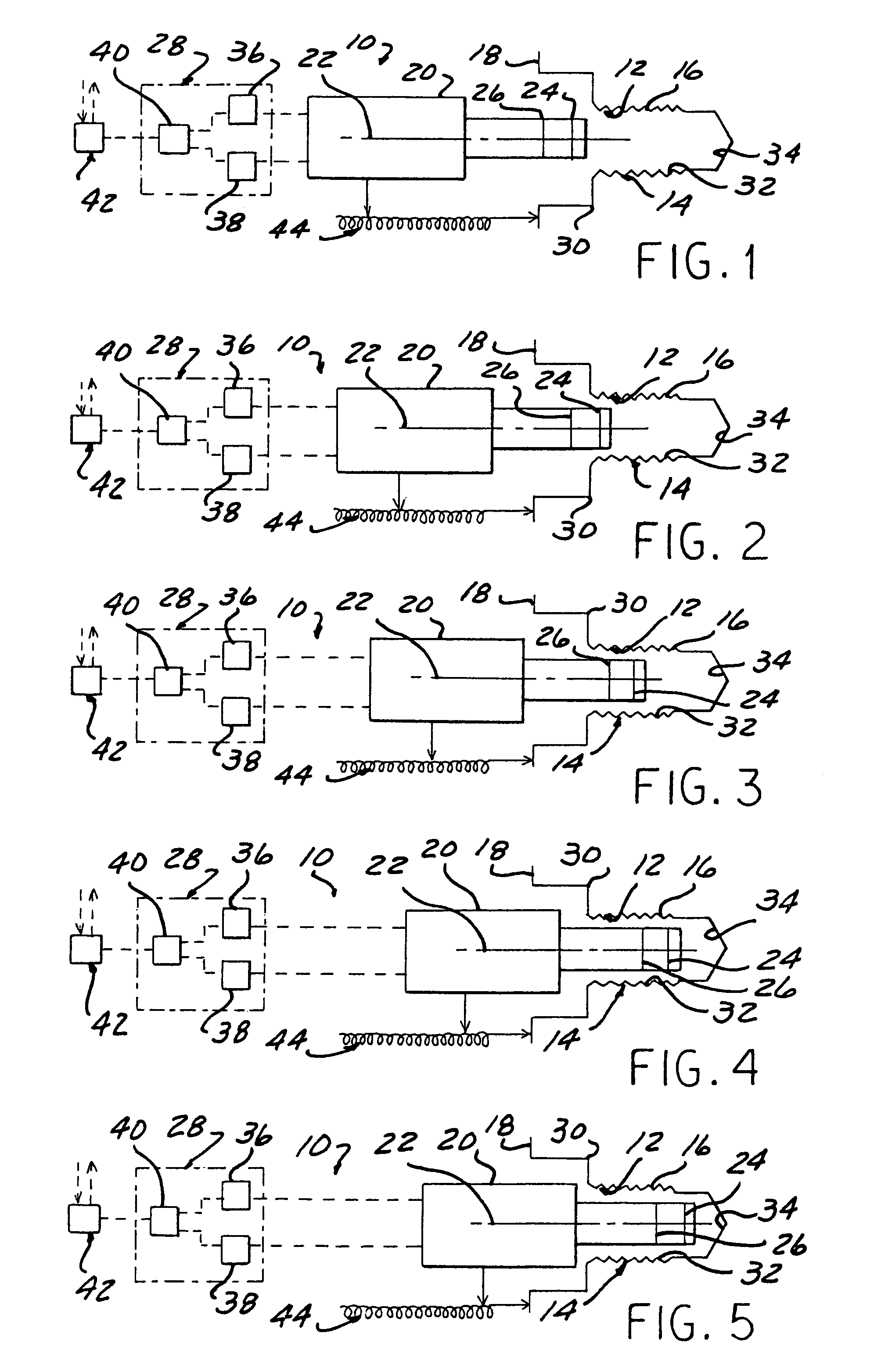Dual coil probe for detecting geometric differences while stationary with respect to threaded apertures and fasteners or studs
a technology of geometric differences and probes, applied in the field of dual coil eddy current probes, can solve the problems of single coil probes and support electronics to compare parts to master parts, and the difficulty of separating non-conform parts from non-conform parts, so as to improve the detection accuracy and improve the detection accuracy. the effect of detecting electromagnetic threads and enhancing the detection accuracy
- Summary
- Abstract
- Description
- Claims
- Application Information
AI Technical Summary
Benefits of technology
Problems solved by technology
Method used
Image
Examples
Embodiment Construction
[0031]Referring now to FIGS. 1 through 5, an apparatus 10 is illustrated for inspecting contours 12 formed along a predetermined region 14 of a surface 16 on a workpiece 18 formed of an electrically conductive material using eddy current. A probe 20 is illustrated in FIG. 1 in a first position and has a longitudinal axis 22. The probe 20 when operating in a “static” configuration, or mode of operation, is moveable along a path of travel to a static testing position, such as the position illustrated in FIG. 5, with respect to the predetermined region 14 to be inspected on the workpiece 18. Preferably, the path of travel extends along the longitudinal axis 22 of the probe 20. At least two coils 24, 26 are spaced longitudinally from one another and supported by the probe 20 to be electrically excited with a predetermined frequency and amplitude while stationary at the static testing position. Means 28 can be provided for measuring the excitation voltage of each coil 24, 26 as eddy curr...
PUM
| Property | Measurement | Unit |
|---|---|---|
| voltage | aaaaa | aaaaa |
| voltage | aaaaa | aaaaa |
| electrically conductive | aaaaa | aaaaa |
Abstract
Description
Claims
Application Information
 Login to View More
Login to View More - R&D
- Intellectual Property
- Life Sciences
- Materials
- Tech Scout
- Unparalleled Data Quality
- Higher Quality Content
- 60% Fewer Hallucinations
Browse by: Latest US Patents, China's latest patents, Technical Efficacy Thesaurus, Application Domain, Technology Topic, Popular Technical Reports.
© 2025 PatSnap. All rights reserved.Legal|Privacy policy|Modern Slavery Act Transparency Statement|Sitemap|About US| Contact US: help@patsnap.com



